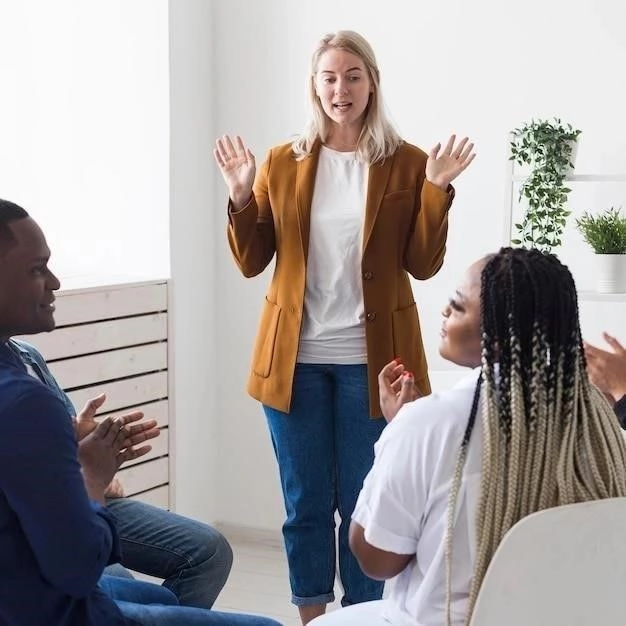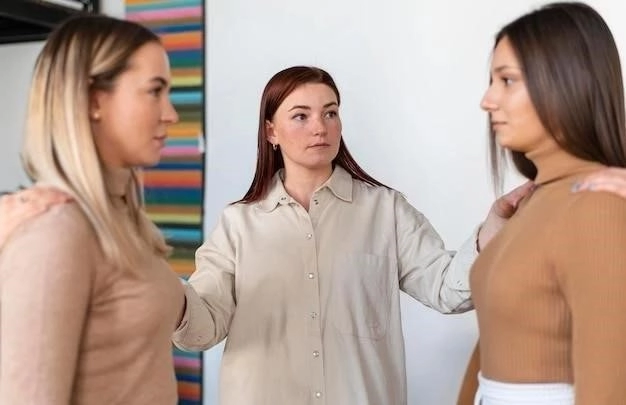The Power of Body Language: Nonverbal Cues That Speak Volumes
In the intricate dance of human interaction, our words often take center stage․ We carefully choose our phrases, striving to convey our thoughts and emotions with precision․ Yet, beneath the surface of spoken language lies a powerful, often overlooked form of communication: body language․

The Unspoken Symphony
Body language, encompassing a vast repertoire of postures, gestures, and expressions, is the silent orchestra that accompanies our words․ From a subtle shift in posture to a fleeting microexpression, these nonverbal cues speak volumes, revealing hidden emotions, intentions, and even personality traits․
A Universal Language?
While some body language cues are culturally specific, many expressions of emotion are universally recognized․ A smile, for instance, transcends cultural boundaries, signaling joy and warmth․ Similarly, a furrowed brow and narrowed eyes convey anger or concern in diverse cultures worldwide․

Decoding the Silent Signals
Mastering the art of reading body language is akin to deciphering a secret code․ By paying close attention to subtle cues, we can gain valuable insights into the thoughts and feelings of those around us․
Facial Expressions: The Windows to the Soul
Our faces are remarkably expressive, capable of conveying a wide range of emotions․
- Happiness: Upturned corners of the mouth, crinkled eyes, raised cheeks
- Sadness: Downward-sloping mouth, furrowed brows, droopy eyelids
- Anger: Narrowed eyes, furrowed brows, tight lips
- Surprise: Raised eyebrows, wide eyes, open mouth
- Fear: Wide eyes, raised eyebrows, open mouth, pale skin
Eyes: The Gateway to Connection
Eye contact is a powerful tool for establishing connection and building rapport․
- Sustained eye contact: Conveys interest, engagement, and trustworthiness․
- Avoiding eye contact: May signal discomfort, disinterest, or deception․
- Pupil dilation: Indicates attraction, interest, or excitement․
Posture: A Reflection of Confidence and Attitude
The way we hold ourselves speaks volumes about our confidence and self-esteem․
- Open posture: Arms uncrossed, shoulders relaxed, conveys openness and approachability․
- Closed posture: Arms crossed, shoulders slumped, suggests defensiveness, insecurity, or disengagement․
- Mirroring: Subtly imitating the posture of the person we’re interacting with indicates rapport and empathy․
Gestures: Emphasizing and Illustrating
Our hands are expressive tools that we use to emphasize points, illustrate ideas, and convey emotions․
- Open palms: Signal honesty, trustworthiness, and openness․
- Clenched fists: Convey anger, frustration, or tension․
- Fidgeting: Playing with hair, tapping feet, or touching the face can indicate nervousness, boredom, or anxiety․
- Job Interviews: Maintaining good eye contact, offering a firm handshake, and sitting up straight project confidence and professionalism․
- Presentations: Using open gestures, moving around the stage with purpose, and making eye contact with audience members enhance engagement and credibility․
- Negotiations: Paying close attention to the body language of counterparts can provide valuable insights into their thoughts and potential concessions․
- Flirting: Subtle cues like prolonged eye contact, hair twirling, and leaning in signal interest and attraction․
- Building intimacy: Touch, such as holding hands, hugging, and cuddling, releases oxytocin, the “cuddle hormone,” fostering feelings of closeness and connection․
- Detecting deception: Incongruence between words and body language, such as avoiding eye contact or fidgeting, may indicate dishonesty․
- Pay attention: Observe the body language of others in everyday interactions․
- Context is key: Consider the situation and cultural norms when interpreting nonverbal cues․
- Look for congruence: Pay attention to whether a person’s words align with their body language․
- Practice self-awareness: Be mindful of your own body language and its potential impact on others․
- Seek feedback: Ask trusted friends or colleagues for feedback on your nonverbal communication․
The Power of Body Language in Action
The impact of body language extends far beyond casual conversations․ It plays a pivotal role in shaping our interactions in various settings․
Workplace Dynamics
In professional environments, mastering body language is crucial for effective communication and building strong relationships․
Relationships and Dating
Body language plays a vital role in attraction, courtship, and building intimacy․
Enhancing Your Nonverbal Intelligence
Becoming more attuned to body language requires practice, observation, and a willingness to challenge our assumptions․
Tips for Improving Your Body Language Skills:

Conclusion: The Silent Powerhouse
Body language, the silent language we all speak, holds immense power to shape our interactions, influence perceptions, and forge deeper connections․ By honing our ability to read and respond to nonverbal cues, we unlock a world of understanding, enhancing our relationships, navigating complex social situations, and achieving greater success in all areas of life․










